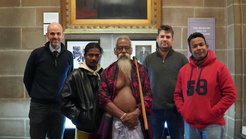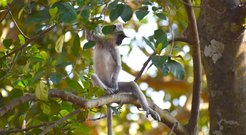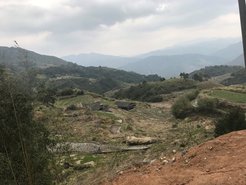Uniting Tropical Heritage and Future Policy
Archaeology and Palaeoecology have major roles to play in addressing contemporary threats (e.g. Morrison, 2021). These disciplines have, however, often been ignored by policy makers beyond anecdotal comparisons. In this project area, the ISOTROPIC group has identified three main avenues through which the datasets it produces can be used to provide practical, quantitative assessments of important use for contemporary challenges.
Heritage management and Indigenous collaboration

Tropical forests are rightly praised and protected for their unique biological and ecological benefits. Nevertheless, this can happen at the expense of their cultural heritage. To underscore and better understand the immense cultural importance of the global tropics, the isoTROPIC Group will contribute to the recording and mapping of cultural sites in tropical forests. In particular, LiDAR scanning can produce virtual heritage that provides new insights into the location and scale of past settlements and other constructions that would otherwise not be available.
The development of natural forest reserves has also often involved the removal of Indigenous populations from forests they and their ancestors have managed for millennia. The detailed archaeological and palaeoenvironmental work of the isoTROPIC group also involves close consultation with Indigenous communities, including participation in repatriation activities, in order to highlight long-term traditional practices and their essential nature to ecosystem dynamics. Maintaining close discourse with Indigenous groups and governmental organisations is a key aim of the isoTROPIC group.
Wildlife conservation
Archaeology and palaeoecology provide a unique, long-term perspective on biotic turnover and human influences on plant and animal communities. Zooarchaeology and palaeontology, for example, can be used to show where extinct or extirpated species lived in the past, while isotope analysis can be used to document how they lived and what they ate, in order to evaluate rewilding initiative. Similarly, archaeobotany and palaeoenvironmental coring can reconstruct the scale and nature of changes introduced by colonial governments or recent industrial activities.

The work of the isoTROPIC Group will be used to directly contribute to discussions of conservation strategies, including the impacts of hunting on different animal species and changes in vegetation communities when exposed to different forms of human management. Our work in Australia, for example, has demonstrated that vegetation distributions and species concentrations in the Wet Tropics of Queensland National Park are likely to be human mediated (Roberts et al., 2021).
Food production and urban planning

The observation that sustainable food production and urban living in tropical forests were possible in the past can be used to develop novel approaches to agriculture and settlement in the 21st century. Palaeoecological research in the tropics, for example, has shown the long-term resilience of mixed systems utilising wild and domesticated resources. Similarly, LiDAR evidence for low density, agrarian cities has been used by urban planners to highlight the importance of the inclusion of green space and food production in future cities.
The isoTROPIC group seeks to make similar contributions to agricultural science, policy making, and urban planning. Collaboration with natural hazard scientists in Brazil, for example, is investigating the importance of maintaining forests on certain slope sides in Brazilian cities in order to mitigate the impacts of mud-slides. Similarly, isotopic and archaeobotanical research in the Democratic Republic of Congo has demonstrated how early farmers relied on a combination of introduced millet and native rainforest tubers, wild animals, and aquatic resources (Bleasdale et al., 2020).


